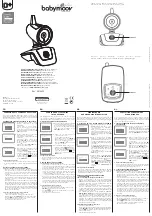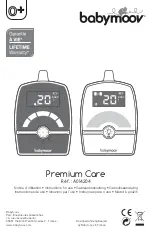
26
Harmonized EN covering the essential requirements of article 3.2 of the R&TTE
Directive
EN301489-1-3 V1.9.2:2011 Electromagnetic compatibility and Radio spectrum
Matters (ERM); ElectroMagnetic Compatibility (EMC) standard for radio
equipment and services; Part 1: Common technical requirements
EN301489-1-17 V2.2.1:2012 Electromagnetic compatibility and Radio spectrum
Matters (ERM); ElectroMagnetic Compatibility (EMC) standard for radio
equipment and services; Part 1: Common technical requirements
EN60601-1-2:2007 /AC 2010: Medical electrical equipment: Part 1-2: General
requirements for basic safety and essential performance-collateral standard
electromagnetic compatibility
EN 55011Group 1 Class B:2009+A1:2010 : Industrial, scientific and medical
equipment - Radio-frequency disturbance characteristics - Limits and methods
of measurement
FCC part B 15B:2013 Electromagnetic Compatibility
FCC Rule Part: 15.247 Cat: DSS (Bluetooth) FCC Rule Part: 15.247 Cat: DTS
(BT4.0)
EN ISO 10993-1:2009 Biological evaluation of medical devices-Part 1:
Evaluation and testing within a risk management process (ISO 10993-1:2009)
ANSI/AAMI SP10:2002/A1 2003(R) 2008: Manual, electronic or automated
sphygmomanometers
ANSI/AAMI/ISO 81060-2:2009 Non-invasive sphygmomanometers Part 2:
Clinical validation of automated measurement type
FCC STATEMENT
Federal Communications Commission (FCC) Statement 15.21
You are cautioned that changes or modifications not expressly approved by
the part responsible for compliance could void the user’s authority to operate
the equipment.
15.105(b)
This equipment has been tested and found to comply with the limits for a
Class B digital device, pursuant to part 15 of the FCC rules. These limits are
designed to provide reasonable protection against harmful interference in a
residential installation. This equipment generates, uses and can radiate radio
frequency energy and, if not installed and used in accordance with the
instructions, may cause harmful interference to radio communications. However,
there is no guarantee that interference will not occur in a particular installation.
If this equipment does cause harmful interference to radio or television
reception, which can be determined by turning the equipment off and on,
the user is encouraged to try to correct the interference by one or more of
the following measures:
-Reorient or relocate the receiving antenna.
-Increase the separation between the equipment and receiver.
-Connect the equipment into an outlet on a circuit different from that to which
the receiver is connected.
-Consult the dealer or an experienced radio/TV technician for help.







































